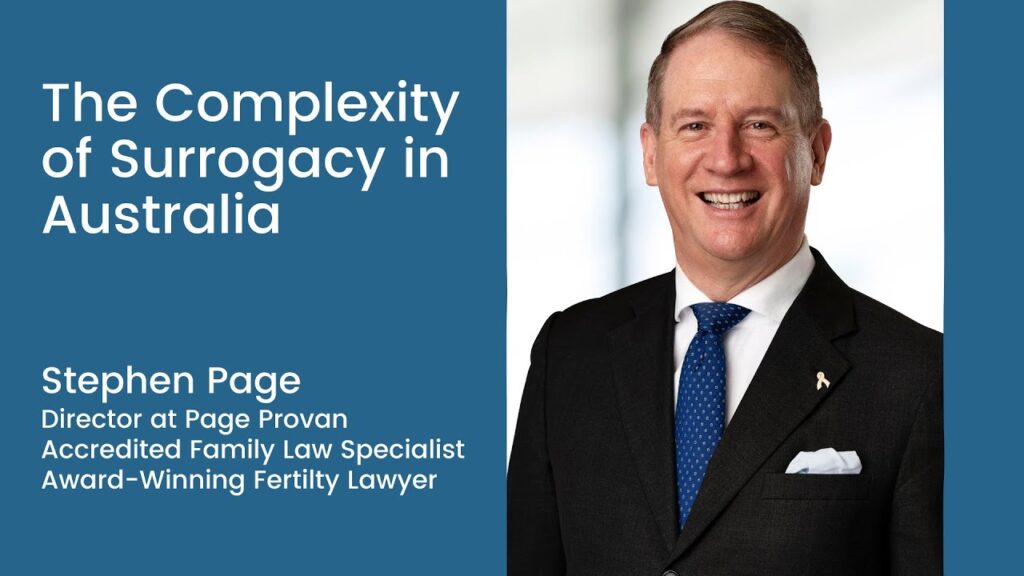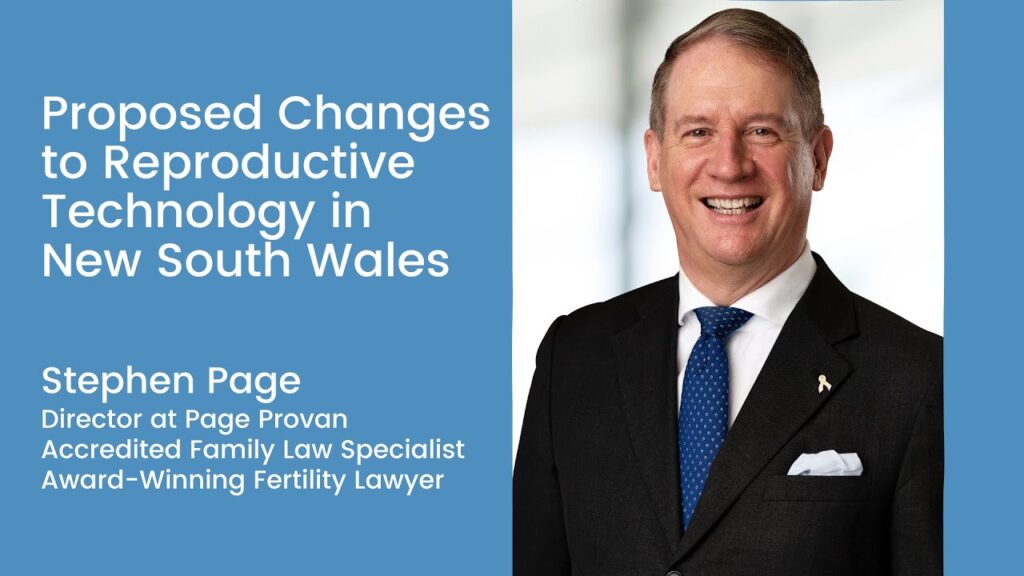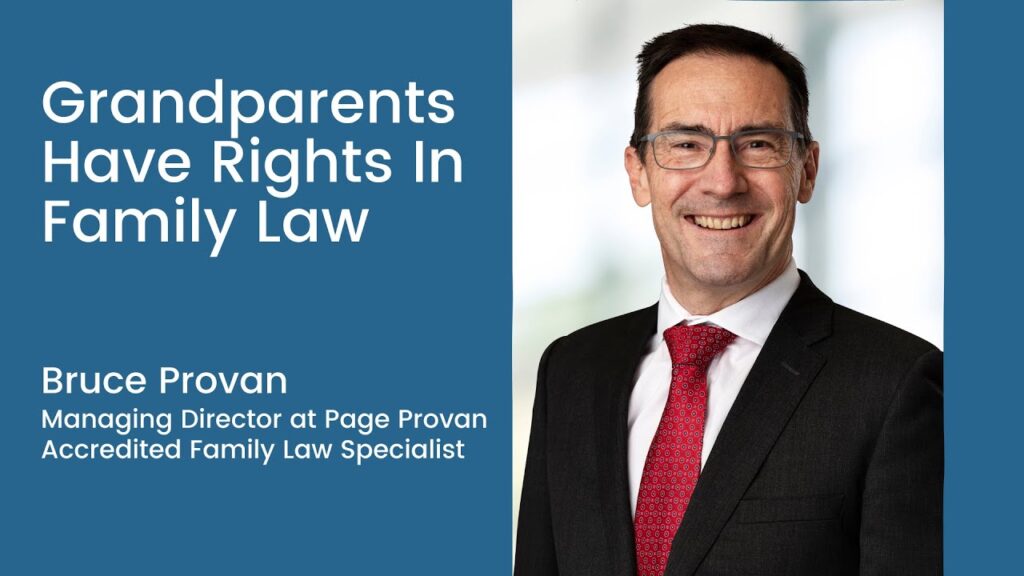Victoria aims to make the burden on surrogates less heavy
Thursday, January 09, 2020
Victoria aims to make the burden on surrogates less heavy
The legal regime for surrogacy in Australia (with the exception of the Northern Territory, which has no laws) is to ensure that surrogates don’t profit from their surrogacy journey but also that they are not out of pocket. For far too long, surrogates have been out of pocket in undertaking surrogacy. The situation was worst in Victoria where the only expenses that could be paid were:
· Any reasonable medical expenses associated with the pregnancy or birth that are not recoverable under Medicare, health insurance or another scheme.
· Any legal advice obtained before entering into the surrogacy arrangement.
· Travel costs relating to the pregnancy or birth.
Those regulations were harsh. Surrogates were typically out of pocket many times over. A surrogate, like any other woman who is pregnant and gives birth in Australia had a 1 in 10,000 chance of dying. Nevertheless, it was a criminal offence for intended parents to pay for her life insurance. Rather than being cherished for being a surrogate, she and her family were potentially being punished.
Even worse, when there was an interstate surrogacy arrangement (such as Queensland and Victoria) there would have to be a close checking of expenses. What might be allowed interstate (such as Queensland) was a criminal offence in Victoria.
The new allowed expenses
What is now allowed are these:
· Any reasonable medical expenses incurred by the surrogate mother that are not recoverable under Medicare, health insurance or another scheme, including –
· Costs incurred prior to conception; and
· Costs associated with the pregnancy and birth; and
· Costs incurred in relation to any child born as a result of the surrogacy arrangement;
· Any reasonable counselling expenses associated with the surrogacy arrangement incurred by the surrogate mother.
· Any reasonable legal costs associated with the surrogacy arrangement incurred by the surrogate mother, including costs for obtaining advice before entering into the surrogacy arrangement.
· Any reasonable out-of-pocket costs directly associated with the surrogacy arrangement incurred by the surrogate mother including, but not limited to, travel, accommodation and childcare costs.
· The cost of reimbursing the surrogate mother for earnings actually lost as a direct result of taking unpaid leave –
· for a period not exceeding 2 months during which the birth occurred or was expected to occur; and
· for any other period during which the surrogate mother was unable to work on medical grounds as a result of the surrogacy arrangement.
· If the surrogate mother obtains health, life or disability insurance, or increases existing health, life or disability insurance, to cover the period prior to the conception, the pregnancy, the birth and post-natal recovery, the cost of reimbursing the insurance premium will increase in an existing insurance premium.
They listened!
It is always a delight when Government listens to stakeholders. For some years I have told anyone who has cared to listen (and even those who don’t) about my concern with the Victorian legislation. I am delighted at these changes, which bring Victoria more in line with laws interstate, but also breath common sense into the law to allow surrogates – the women who should be cherished – not to be out of pocket.
What we said
My associate, Karen Gough and I made the submissions on this point in 2018. The particular point was headed “Compensation for donors and surrogates”:
“As you quite rightly say in relation to donors:
“This lack of clarity has resulted in different interpretations and different levels of compensation paid by different clinics within Victoria.”
RTAC set out in its 2011 guidance as to what could be paid, guided by the payments for a surrogate under the Surrogacy Act 2010 (NSW) in the absence of comprehensive State legislation. In 2016 the NHMRC wrote to various clinics implicitly criticising them to make sure that they pay donors on a case by case basis because otherwise it would be deemed to be commercial egg donation in breach of the relevant legislation. No guidance was provided by the NHMRC at that stage as to what was commercial and what was not.
The NHMRC issued new guidelines in 2017, which seem to run counter, at least in part, to the 2011 guidance from RTAC.
Many hours are spent by us trying to discern what are reasonable expenses. The phrase is all but identical with reasonable costs in respect of surrogates under the Surrogacy Acts of New South Wales, Queensland and Tasmania. It would be helpful if the Victorian legislation set out with some particularity what is reasonable and gave examples. It would be even more helpful if the regulations set figures as to what is reasonable. These figures should be generous to reflect reality.
A consideration that should be made in specifying what is reasonable is that there is matching Commonwealth legislation. The legislation is quite clear in section 24 that State and Territory legislation can sit alongside. Nevertheless, there is a national scheme and it would be helpful if there were a national approach through COAG so that there is a nationally consistent approach. Whilst it would be helpful for Victoria to specify what is reasonable (again with a realistic ambit of the amount) we have a concern about the validity of specifying those amounts given the nature of the Commonwealth legislation and a concern that any approach within Australia be consistent. On balance, if there is not an endorsed approach through COAG, Victoria at least should go it alone (subject to the constitutional issue) and specify what is reasonable. Using guidance from the New South Wales, Queensland and Tasmanian Surrogacy Acts is a good start.
In our view, when the NHMRC wrote to clinics in 2016 it misread the law. The law did not specify about individual circumstances of donors, but merely whether the payment that was made for the donor’s expenses was reasonable.
Clinics have reported to us that following the NHMRC letter, considerable administrative time has been spent in calculating for the individual donor to see whether the expenses are reasonable. This time has to be paid for by someone. In reality this is an extra regulatory burden imposed which ultimately falls upon the intended parents. To have specified amounts decreases that burden.
As you say, the Victorian regime does not allow for example for additional insurance expenses incurred by a surrogate to be met by the intended parents nor is there provision for lost income as a result of leave taken during pregnancy. This is an absolute disgrace. Surrogates should not be left out of pocket. Many expenses which are allowable in Queensland, New South Wales or Tasmania for surrogates are not able to be paid in Victoria. Why is it that a surrogate in Victoria who has a 1 in 10,000 chance of dying as any other woman may do through being pregnant and giving birth, cannot be provided life insurance by the intended parents? When we discuss ethics and morality, surely it is completely immoral that a woman should be expected to risk her life without the comfort of knowing that her husband and children will be provided for through life insurance if she dies? Nor unlike other States, is it lawful for income protection insurance to be paid for the surrogate.
It is common for women who undertake surrogacy, just like other women who are pregnant, to have massages and acupuncture or alternative therapies. These are simply not allowed under the Victorian regime.
Bizarrely, the regime allows for a surrogate and her partner to receive legal advice before they enter into the surrogacy arrangement, but if the surrogate and her partner seek legal advice during the course of the surrogacy arrangement or wish to be represented at the hearing of the substitute parentage order application, they have to pay themselves. On the face of it, if the intended parents were to pay it is a criminal offence, rendering the surrogacy arrangement a commercial one. This is truly a bizarre outcome that arises from the law of unintended consequences because of the restrictions under the ART regulations of what can be paid to surrogates.
Providing more definition as to what is a reasonable expense to be paid to a donor will not solve the great shortage of donors. Victorians will continue to go overseas. More substantial reform is required to solve that problem. However, it will fix at the margins a number of donors and will make the administrative burden on clinics less and therefore help drive costs down (at least not force them up) to the intended parent.
Similarly, adopting a Queensland, New South Wales or Tasmanian approach to the costs payable to a surrogate won’t solve the shortage of surrogates. There are plenty of intended parents from Queensland and New South Wales (and to a lesser extent Tasmania) who go overseas for surrogacy. There are simply too few surrogates in Australia. Our failure to properly compensate surrogates means that, with rare exception, any woman who is not a friend or family member of the intended parents likely will not volunteer to be a surrogate.
In Canada there are currently moves by IVF clinics and prominent fertility lawyers to move to a US style system because they believe that they have failed to properly protect and cherish surrogates. Be that as it may, surrogates in Canada are typically paid for expenses in the range of C$20,000 to C$22,000. The Australian dollar and the Canadian dollar have been roughly at parity. If Victorian regulations allowed compensation to surrogates capped at say A$22,000, we are certain that there would be a large increase in local surrogates who would be available. This would therefore decrease the number of risky surrogacy journeys overseas and decrease the costs borne by intended parents on those journeys.
In his submissions to the 2016 House of Representatives Surrogacy Inquiry, Stephen Page proposed that the base compensation payable to egg donors be capped at $5,000 (excluding the various medical expenses) and for surrogates $10,000, again excluding their various expenses. We consider those figures again to be reasonable, consistent with the current Canadian approach and would likely result in more donors and surrogates being available and therefore fewer overseas journeys.
The reality for donors and intended parents in Canada and the United States is that there are lengthy donor agreements entered into specifying the legal roles of each of the parties and the compensation payable. These agreements seem to be legally binding – which is not able to be provided for under our current legal settings. To have legally binding donor agreements of that nature would be of great assistance for all parties – so that they know with certainty where they stand.”












